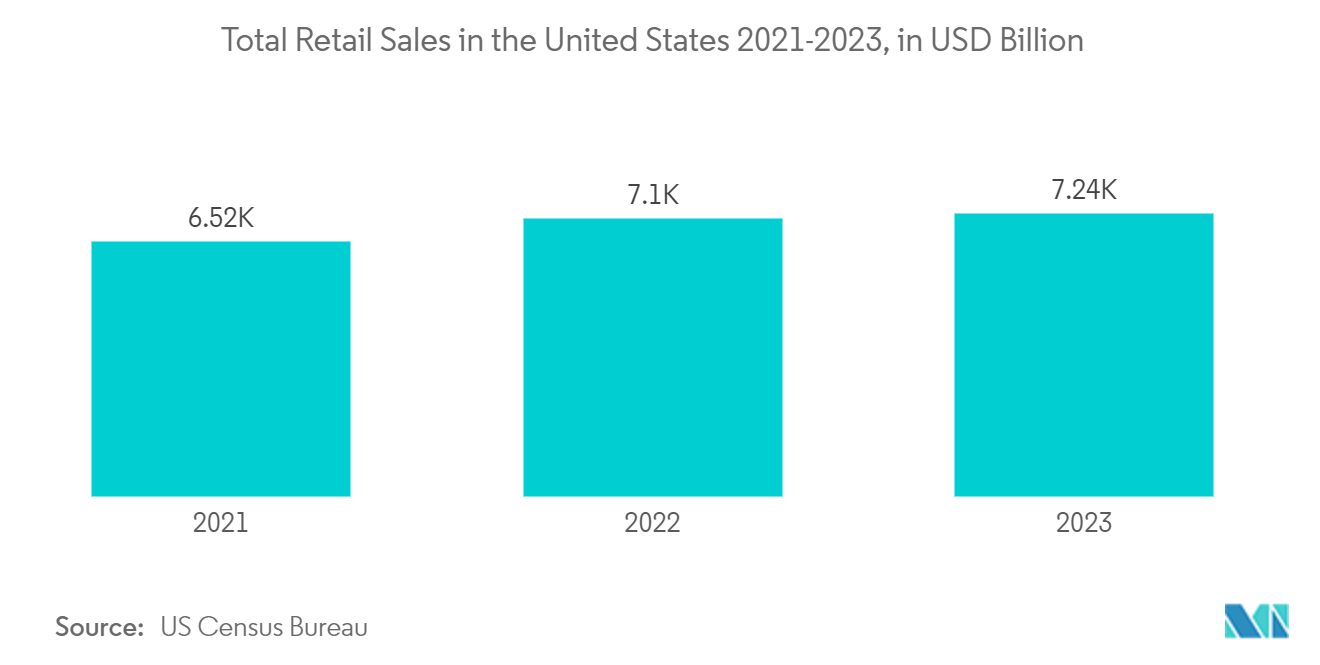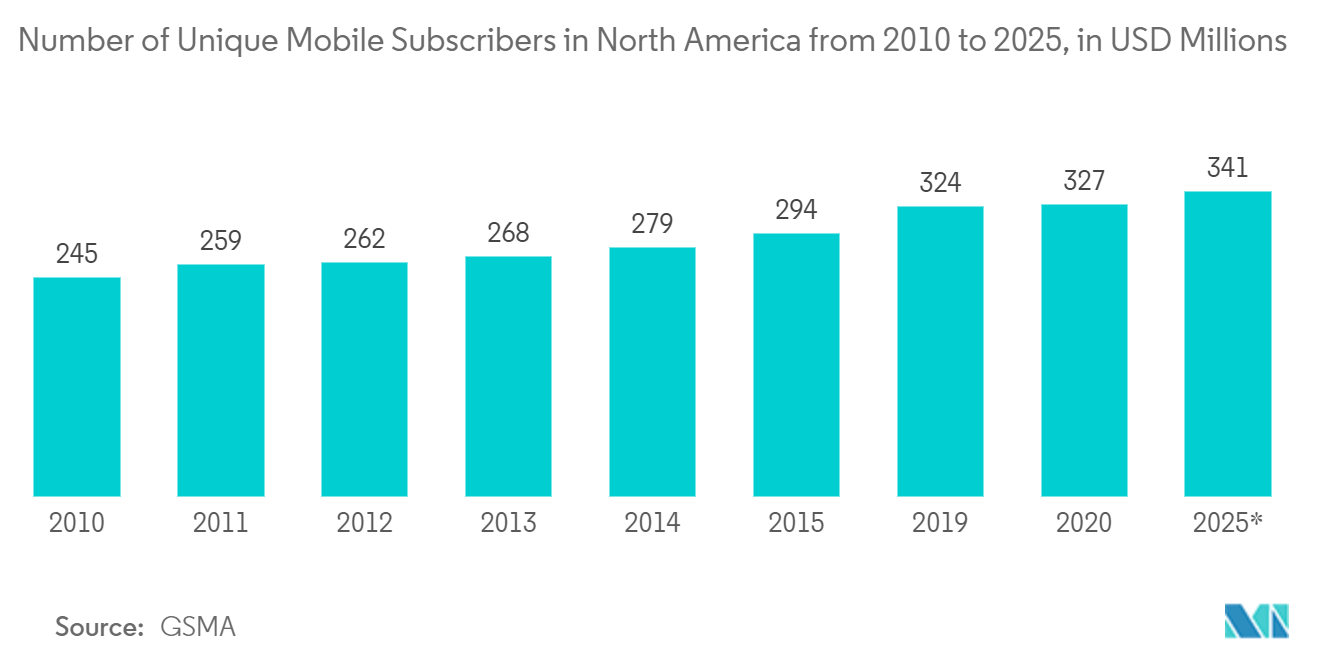Market Trends of North America Location Analytics Industry
Retail Sector to Witness the Growth
- In order to create a more cohesive omnichannel shopping experience, location data plays an essential role. Because of how easily people rely on mobile shopping and mobile location, the application of location analytics for retail has been pushed by the rising use of mobile devices, making it easier for sellers to integrate location data with marketing campaigns to display shoppers with appropriate recommendations at the right time.
- Increasing use of location analytics for different purposes, e.g., to improve Return on Investments (ROI), increase sales, reduce costs, strengthen customer satisfaction, and build loyalty among customers, has been taking place over the past years within the Retail sector.
- Location Analytics solves retail problems, for example, store sales forecasts, driving time and distance profiling, network optimization & scenario modeling, site selection planning, franchise area evaluations& overlap analysis, sales & market share analysis, market size as well and demand estimation through location products, territory optimization & planning, segmentation of the customer.
- Another way for retailers to increase their sales is through location marketing, where targeted messages are delivered directly to the chosen consumers near them. The fact that a wider audience is present in one place simultaneously may also make it possible to shift the targeted advertisement to such an online advertising platform. Retailers also have the opportunity to link their customers' online shopping experience with brick-and-mortar stores through location intelligence. Retailers can improve their understanding of buyer behavior and respond to their needs by connecting site visits and browsing histories with a visitor who is physically present at the store.
- Furthermore, by enabling retailers to use dynamic map maps that show population data and demography groupings, location analysis has also been employed in the selection of commercial sites. Retailers will be able to evaluate potential new sites in nearby areas and watch traffic patterns.

Growing Demand For Geo Based Marketing is Driving the Market
- As more and more mobile devices are being used, location is becoming increasingly important to marketing. Location-based information, such as upcoming events in the area, proximity to a store, or many other factors, may enable marketing teams to target consumers easily. Organizations can target consumers personally or geographically, with online or offline messaging based on their physical location using geobased/location-based marketing. Therefore, Geodynamic marketing can tell prospective buyers that the product they are considering is in stock at another shop, allowing them to buy it immediately.
- In addition, recent years have seen a marked increase in interconnected devices; thus, geo-marketing has become feasible. Everything, such as watches, cars, cell phones, and so on, can be traced back to the Internet. It is common for connected devices to record the movements of their users; a wealth of information about location and geography is available. To better understand how consumers are being approached and improve the overall experience, marketing teams may apply the information gathered from these data.
- It is crucial to emphasize encouraging customers to provide location information in all geobased marketing plans. For example, the Microsoft study "The Value Exchange of Consumer Data" shows consumers are very eager to trade data in return for discounts, financial incentives, and other perceived benefits.
- As far as end users are concerned, nearly half of US retailers use location deals. It is useful to them at a given moment when they are drawing customers into their shops. It's hard keeping up with consumers that are always on the move. The concept of location-based advertising acts as a connecting point between consumers and retailers. Real-time push notifications, messages, and alerts may be received at the correct time for consumers.
- For instance, Walgreens uses geofencing to promote customer loyalty by pushing a notification that allows users to open their app every time they enter the geofenced area. The user can further view promotional offers by looking at their account details. Moreover, retailers notice several retargeting opportunities While creating user journeys for a personalized experience. When a user enters a retail store, offers and in-store validations can also be delivered. Real-time triggers might be used to target these remarketing opportunities.


